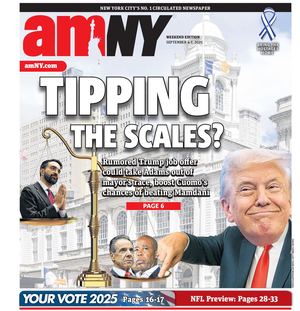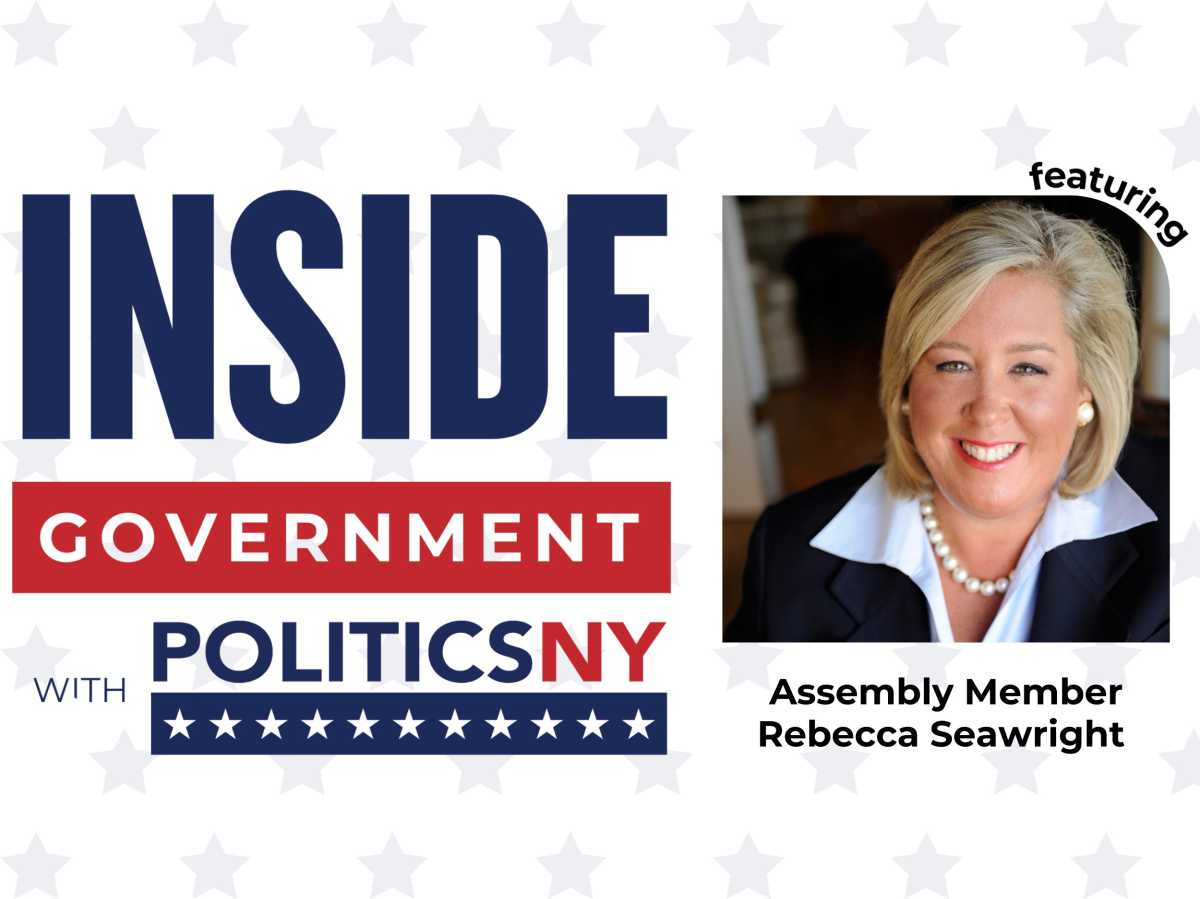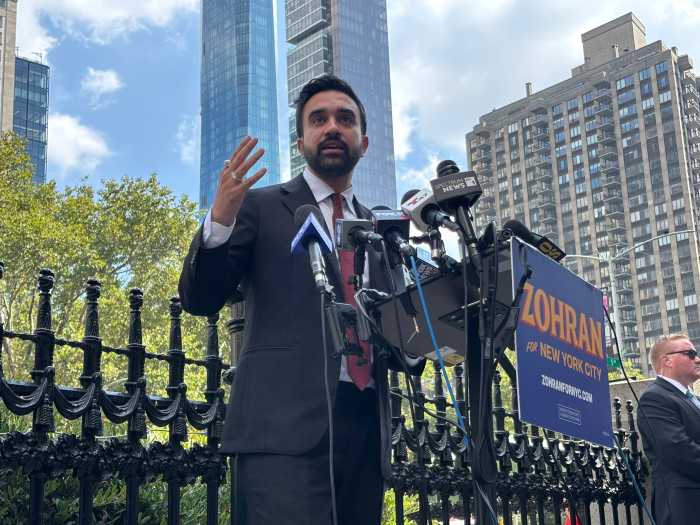Andrew Cuomo has discovered the reply button — and he’s using it to try to reach a new audience on social media as he races to catch up to Democratic nominee Zohran Mamdani in the campaign for mayor.
“Fly like a butterfly, sting like a bee,” the former governor wrote to a venture capitalist who advised President Donald Trump in response to praise. It appeared to be a variation of a Muhammad Ali quote, though Ali originally said, “Float like a butterfly, sting like a bee.”
Replying to supporters praising his posts, Cuomo has sent various emojis, including boxing gloves and flames. When a user called him a “merchant of utter nonsense,” Cuomo shot back: “Make it make sense.”
Many experts and pundits attributed Mamdani’s resounding defeat of Cuomo in the Democratic primary at least partially to the 33-year-old assemblymember’s social media savvy. Cuomo’s campaign has been hoping to reach voters online as he lags behind Mamdani in recent polls. But the results are mixed, according to political science experts and campaign strategists.
Since July, the traditional videos that dominated Cuomo’s feed — such as press conferences or talking directly to the camera — disappeared. In their place were videos that mimicked Mamdani’s style, employing artsy techniques like filters and shaky cameras that seem aimed at driving digital traffic.
Starting early this month, Cuomo began regularly engaging with individual users who commented on his posts, particularly on X.
Cuomo campaign: ‘We’re going to voters where they are’
Rich Azzopardi, a spokesman for Cuomo’s campaign, said the campaign wanted to “shake things up” after Cuomo’s primary loss.
“We’re going to voters where they are,” Azzopardi told amNewYork. “And that’s in the streets, that’s at the block party, that’s at the festivals, and it’s on social media, so we had to beef up our social media game.”
The change appears to have happened virtually overnight. He went from posting almost no replies on X and Instagram on Aug. 4, a few on Aug. 5, and then dozens per day after that.
Lupe Todd-Medina, a Democratic strategist who is not currently involved in the mayoral race, said Cuomo is trying to reinvent himself in a space where Mamdani is already winning.
“It’s really difficult to try to start a certain kind of campaigning when you’ve never done it before and you’re doing it for the first time right during the general election,” Todd-Medina told amNewYork. “For Assembly Member Mamdani, it’s different — that’s just who he is. That was already his brand.”
“It’s not authentic coming from Cuomo,” Todd-Medina added.
Azzopardi said Cuomo is not trying to “out-Mamdani Mamdani” but rather aiming to show voters the former governor’s ideas and plans.
Joshua Tucker, co-director of the Center for Social Media and Politics at New York University, said Mamdani tapped into relatively recent developments in digital media that prioritize algorithms over followers. Mamdani engineered his posts to go viral while including substantive policy proposals, Tucker said.
Tucker added that in one of Mamdani’s most famous videos, where he announced his support for a rent freeze while taking a polar plunge, the assemblymember explained the city’s affordability crisis alongside the attention-grabbing setting.
“The question for Cuomo is how much the followers were just excited by the social media videos, versus whether they were excited by the message that Mamdani was getting out there using social media,” Tucker said. “So Cuomo just picking Twitter fights is probably going to get him more attention, but I don’t think there’s any particular policy issue that anyone is associating with it.”
Azzopardi said Cuomo’s recent post criticizing Mamdani for living in a rent-stabilized apartment reached 35 million views, which Azzopardi argued showed the former governor’s ability to fight online.
Online pushback
But Cuomo’s digital push has generated blowback.
After Cuomo reposted sarcastic praise for his new campaign logo, another user suggested the original poster change his X username to “Andrew Cuomo Is A Sex Pest” — which he did. The replies dissolved into critics attacking Cuomo for his 11 sexual harassment allegations that prompted him to resign as governor; Cuomo deleted his post.
Azzopardi mocked the online critics.
“When you’re more aggressive online, dealing with those with great cell phone reception under the bridges that they call home is part of the joys of social media,” Azzopardi said.
The focus on social media in politics is not new, but Cuomo is still not tapping into its full potential, said Katherine Haenschen, an associate professor of communication studies and political science at Northeastern University.
Haenschen said social media is an opportunity to personify politicians, allowing them to interact with constituents online while appearing more relatable. But she said many politicians struggle to master that skill, which puts Mamdani at an advantage.
“There’s just a handful of politicians that have shown, time and time again, the ability to have content that’s good and relatable that your supporters would want to share with other people with their friends,” Haenschen said.
While Cuomo has moved on from a feed populated with endorsements and announcements, the majority of his responses merely thank or agree with supporters — albeit often using puns or emojis.
Chi Ossé, a progressive Brooklyn councilmember who is known for his strong social media strategy, said Cuomo’s attempts at online engagement feel inauthentic.
“It’s embarrassing,” Ossé said. “My grandmother uses social media better than Cuomo. I just have to laugh.”
Todd-Medina said social media is a “bubble,” so it is unlikely Cuomo’s new online presence will dramatically reshape the race.
“How Mamdani really beat Cuomo is that he was everywhere,” Todd-Medina said. “He met people where they’re at, and where they are at is not on social media. Where they’re at is in their neighborhoods, at their block club meetings, at the public pool, in the supermarket, on the subway. You don’t need to be on Twitter to know that.”








































